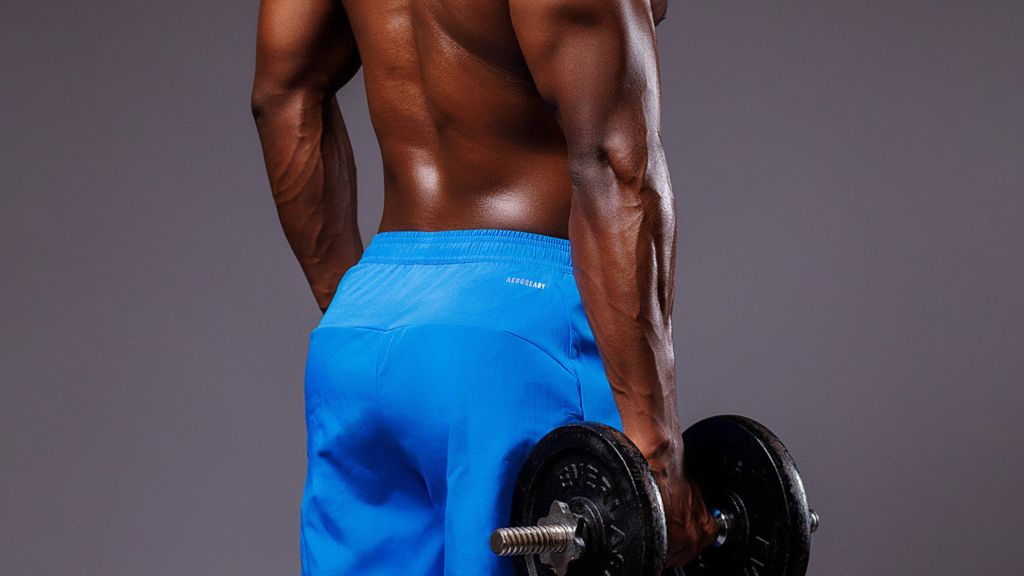Calisthenics and weightlifting for strength building is an age-old discussion that continues to captivate fitness enthusiasts, especially those that want to build muscle or get stronger. Each approach comes with its own set of advantages and challenges, appealing to different preferences and fitness goals. In this comprehensive guide, we’ll delve into the world of calisthenics and weightlifting, exploring their unique benefits, potential drawbacks, and helping you make an informed decision about the most suitable strength-building approach for your fitness journey.
How Calisthenics Works

Calisthenics, often referred to as bodyweight training, involves using your body weight as resistance to build strength, flexibility, and endurance. This form of exercise includes movements like push-ups, pull-ups, squats, and planks. Let’s explore the key benefits of calisthenics:
- Versatility: Calisthenics requires minimal equipment, making it accessible to virtually anyone, anywhere. This versatility allows for a flexible workout routine without the need for an extensive array of gym equipment.
- Functional Strength: Calisthenics movements mimic real-life activities, promoting functional strength that is applicable to daily tasks. This type of strength is not only aesthetically pleasing but also enhances overall physical performance.
- Joint Health: Calisthenics is often gentler on the joints compared to heavy weightlifting, making it a preferred option for individuals with joint concerns or those aiming for a low-impact workout.
Can Calisthenics Build Muscle?
Calisthenics can be an effective method for building muscle, especially for individuals who are relatively new to resistance training or have specific preferences for bodyweight exercises. Calisthenics involves using your own body weight as resistance, and it encompasses a variety of exercises that target different muscle groups. Here’s how calisthenics can contribute to muscle building:
- Compound Movements: Many calisthenics exercises are compound movements, involving multiple muscle groups simultaneously. For example, exercises like pull-ups, push-ups, and dips engage not only the targeted muscle but also recruit stabilizing muscles, promoting overall muscle development.
- Progressive Overload: Progressive overload is a fundamental principle for muscle growth. While it might be more straightforward to increase resistance in traditional weightlifting, calisthenics allows for progression by altering the difficulty of exercises. For instance, you can make push-ups more challenging by elevating your feet or progressing from regular pull-ups to more advanced variations.
- Muscle Endurance: Calisthenics workouts typically involve higher repetition ranges, promoting muscle endurance. While this may not result in the same muscle hypertrophy as heavy weightlifting, it can contribute to increased muscle endurance and definition.
- Versatility: Calisthenics offers a wide range of exercises that can be adapted to various fitness levels. Whether you’re a beginner or an advanced practitioner, calisthenics can be tailored to your current strength and skill level.
While calisthenics can be effective for muscle building, it’s essential to note that the extent of muscle growth may vary among individuals. Factors such as genetics, nutrition, consistency, and the specific calisthenics routine followed all play a role in determining the results.
The World of Weightlifting

Weightlifting, on the other hand, involves using external resistance, such as dumbbells, barbells, or machines, to build strength. This form of training is typically associated with muscle hypertrophy and power development. Let’s explore the key benefits of weightlifting:
- Progressive Overload: Weightlifting allows for precise control over resistance levels, facilitating the concept of progressive overload. This is crucial for muscle growth and strength development as you can systematically increase the weight over time.
- Isolation of Muscle Groups: Weightlifting enables the targeting of specific muscle groups through isolation exercises. This targeted approach can be advantageous for individuals looking to address specific weaknesses or imbalances.
- Time Efficiency: Weightlifting often results in quicker workout sessions due to the focused nature of exercises and the ability to target multiple muscle groups simultaneously. This can be appealing for individuals with busy schedules.
How Weightlifting Changed My Life
Embarking on my weightlifting journey was more than a commitment to physical fitness; it was a transformative experience that rippled into every aspect of my life. Weightlifting became a metaphor for resilience, discipline, and personal growth.
Physically, the changes were undeniable. Muscles sculpted, endurance soared, and the energy boost became a daily high. But beyond the physical, weightlifting became a mental sanctuary. The discipline to stick to a routine, conquer personal records, and bounce back from setbacks spilled into daily life.
Weightlifting taught me consistency, facing challenges head-on with unwavering focus. The sense of accomplishment after each session fueled ambitions and instilled confidence in every area of life. Resilience forged under the barbell became my armor against life’s uncertainties.
Weightlifting wasn’t just solitary effort; it cultivated a supportive community. The gym transformed into a space where camaraderie flourished, providing motivation for personal growth.
It has woven a thread of strength, resilience, and personal empowerment. It’s not just about lifted weights or physical gains; it’s the lessons learned, mental fortitude developed, and profound impact on overall well-being. Weightlifting shaped my identity, instilled discipline, and brought forth a version of myself I never knew existed. Through the clanging of weights and sweat-soaked hours, I discovered the transformative power of weightlifting, and for that, I am forever grateful.
Are Calisthenics Better Than Weights?

The question of whether calisthenics are better than weights (traditional weightlifting) is subjective and depends on individual goals, preferences, and circumstances. Both calisthenics and weightlifting have their own unique advantages and considerations. Let’s explore the pros and cons of each to help you make an informed decision based on your fitness objectives.
Calisthenics:
Pros:
- Accessibility: Calisthenics can be performed anywhere, requiring minimal to no equipment. This makes it a convenient option for individuals who prefer to work out at home or in outdoor settings.
- Functional Strength: Calisthenics exercises often involve compound movements that engage multiple muscle groups simultaneously. This promotes functional strength, which is beneficial for daily activities and overall mobility.
- Joint-Friendly: Calisthenics are generally gentler on the joints compared to heavy weightlifting. This makes it suitable for individuals with joint issues or those looking for a low-impact workout.
- Versatility: There is a wide variety of calisthenics exercises that can target different muscle groups, providing versatility in your workout routine.
Cons:
- Limited Resistance: Calisthenics relies on body weight for resistance, which may limit the extent of progressive overload. Increasing resistance in calisthenics can be challenging once body weight exercises become easier.
- Muscle Hypertrophy: While calisthenics can contribute to muscle growth, it may not be as effective as weightlifting for those specifically aiming for significant muscle hypertrophy.
Weightlifting:
Pros:
- Progressive Overload: Weightlifting allows for precise control over resistance levels, facilitating the concept of progressive overload. This is crucial for muscle growth and strength development.
- Muscle Isolation: Weightlifting exercises often target specific muscle groups, allowing for isolation and focused development. This can be beneficial for individuals looking to address specific weaknesses or imbalances.
- Equipment Availability: Weightlifting is typically performed in gyms, where a wide range of equipment is available, including barbells, dumbbells, and machines. This provides more options for varied and targeted exercises.
Cons:
- Equipment Dependency: Weightlifting often requires access to a gym with the necessary equipment, which may not be convenient for everyone. This dependency on equipment can limit workout options.
- Joint Impact: Heavy weightlifting, especially with improper form, can put significant stress on the joints. This may be a concern for individuals with joint issues or those prone to injuries.
The choice between calisthenics and weightlifting ultimately depends on your fitness goals, preferences, and individual circumstances. Some individuals may find success in combining both approaches, creating a well-rounded and adaptable workout routine. It’s essential to consider factors such as convenience, access to equipment, joint health, and specific fitness objectives when making your decision. Experimenting with both calisthenics and weightlifting can help you determine which approach aligns best with your needs and contributes to a sustainable and enjoyable fitness journey.



0 Comments